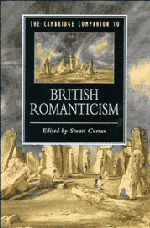Book contents
- Frontmatter
- 1 Romanticism, criticism and theory
- 2 Romanticism and Enlightenment
- 3 Poetry in an age of revolution
- 4 German Romantic Idealism
- 5 Romanticism and language
- 6 Culture's medium
- 7 Romantic Hellenism
- 8 Women readers, women writers
- 9 Romantic fiction
- 10 Romantic poetry
- 11 The sister arts in British Romanticism
- Chronology
- Bibliography
- Index
9 - Romantic fiction
Published online by Cambridge University Press: 28 May 2006
- Frontmatter
- 1 Romanticism, criticism and theory
- 2 Romanticism and Enlightenment
- 3 Poetry in an age of revolution
- 4 German Romantic Idealism
- 5 Romanticism and language
- 6 Culture's medium
- 7 Romantic Hellenism
- 8 Women readers, women writers
- 9 Romantic fiction
- 10 Romantic poetry
- 11 The sister arts in British Romanticism
- Chronology
- Bibliography
- Index
Summary
Prose fiction had and has an uncertain place in Romantic literature. During the Romantic period itself, from the last decade or so of the eighteenth century to the 1830s, most prose fiction was considered subliterary, suitable for children, women, and the lower classes. A few works were cherished by readers in all classes as childhood reading or “popular classics,” including centuries-old chapbooks such as Jack and the Giants, Valentine and Orson, and The Fair Rosamund and longer works such as The Pilgrim's Progress, Robinson Crusoe, and The English Hermit. Don Quixote and the novels of Richardson, Fielding, Sterne, and Smollett were regarded as important works of literature, but were only commercialized as “classics,” along with certain poets, dramatists, and belletrists, after the ending of perpetual copyright in 1774. Most novels published during the period were dismissed by critics and even readers as “the trash of the circulating library,” to be rented, read quickly, and forgotten. Those “novels of the day” that did cause a stir were quickly cut down to sixpenny chapbooks for the new lower-class market in cheap fashionable novelties, founding the modern market for “romances” of all kinds.
- Type
- Chapter
- Information
- The Cambridge Companion to British Romanticism , pp. 196 - 215Publisher: Cambridge University PressPrint publication year: 1993
- 3
- Cited by

